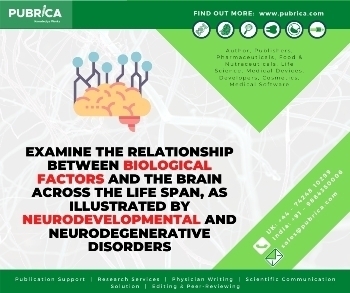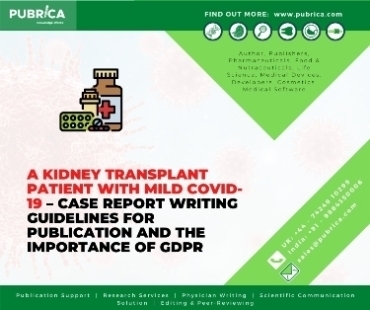What is the risk of bias assessment and different tools used to assess systematic review?
May 20, 2020PRO instrument and its types
June 24, 2020Positive psychology is the study of the positive aspects of human experience, which make life worth living or the “good life”. As an art, it reflects on well-being both societal and individual well-being.Motivation is essential to many aspects of our lives. This is dynamic and pervasive in its breadth and underpins the way we view and handle one another. Motivation is more important in determining our achievements than ability.Success in any aspect of life is a psychological process, determined by our mental attitude, i.e. our motivation. An awareness of motivation, particularly the critical requirements for optimum success, offers an essential and unifying emphasis for those involved in Positive Psychology, learning and teaching or organizational and personal growth.Numerous constructs have been correlated with psychological concepts in particular entities, such as self-regulation, autonomy, mastery, persistence, self-efficacy, perceived control and goals. Each of these constructions encompasses one or more unique motivating and behavior facets(Knecht & Freund, 2017). Models of motivational self-regulation help researchers to recognize the main regulatory obstacles across various phases of the goal pursuit(Heckhausen et al., 2019).
What Positive Psychologyfocuses on in brief?
The emphasis of positive psychology is on the influences in lifeand positive events,including:
- Positive institutions (Positive standards are implemented to both organizations and entities).
- Positive experiences (love, inspiration, joy and happiness).
- Positive states and traits (compassion, resilienceand gratitude).
Positive psychology, as a discipline, invests most of its time thinking about topics like elevation, hope, self-confidence and self-esteem, compassion, gratitude, well-being, happiness, life satisfaction and optimism.
Goals of Positive Psychology
It may be a complicated business to add motivational thinking to coaching, but it is done with the highest possible thoughts and compassion about others. In general, in coaching the goals of positive psychology are as follows:
- To make a good effect on the customer’s life- this goal is above all others, and all things implicitly feed into this goal. The primary purpose in coaching is to improve the life of the person.
- Support consumers know how to savour any positive moment
- Encourage the consumers to maintain an optimistic outlook
- Help the consumers build and maintain healthy, positive relationships with other
- Nurture a sense of gratitude in the consumers;
- Cultivate the consumer’s sense of happiness and well-being
- Build a sense of hope into the consumer’s perspective
- Enhance the consumer’s goal-setting and goal-striving abilities
- Help consumer’s identify and develop their strengths and unique talents
- Increase the consumer’s experience of positive emotions.
Unattainable long-term goals
Sometimes goals are unattainable through the application of positive and motivational psychology. Individuals are at risk of losing their standard of life in these circumstances and will need to surrender the unattainable target, preserve their mental and motivating capital and invest in more realistic goals. A common psychological phenomenon is having a goal that cannot be achieved.Unattainable goals may be met throughout a person’s existence for different causes and at any stage.For example, individuals can choose goals outside their capacities, and will therefore never be achieved orthey experience crucial life events which render the pursuit of a target impossible to continue. In addition, there are life-course-related changes that, over time, can render certain goals unattainable that were at some point in an individual’s life realistic and achievable. To this end, life span research has shown that opportunities and resources for achieving personal objectives show sharp declines as people age. For instance, age-related biological changes make women unable to bear children after a certain age, and make it difficult to maintain physical health levels comparable to those experienced at young adulthood. Societal prescriptions also place normative constraints on the pursuit of career- and family-related developmentally timed goals.In addition, given the occurrence of age-related declines in personal resources, older adults may need to focus their time and energy on pursuing the most important goals, and thus may be forced to abandon other, more peripheral, goals.Thus, biological, societal, and personal constraints may increase the likelihood of older adults experiencing constraints to pursue their personal goals.
Unattainable goals, physical health and emotional distress
Regardless about whether a goal can no longer be achieved, achieving an unattainable objective will produce an problem with the quality of life of an individual as inability to reach a desirable result that is linked to the general sense of identity of a person will induce high rates of emotional distress(Wrosch, 2010). This process is captured by theories of self-regulation, which postulate that goal-related processes are organized into feedback loops, in which goals provide significant reference values for the emotional experiences and behaviors of a person. It has been proposed that people ought to participate in proactive self-regulation to prevent the negative effects of target achievement on psychological and physical wellbeing. Various approaches to adaptive self-regulation believe that two large types of responses are involved in handling loss in the pursuit of goals. One type of responses is goal engagement processes, which aim to resolve challenges by continuing to spend time and energy to accomplish a threatened goal.The second group attempts for the very opposite outcome; that is, to drop the threatened goal, to handle the negative emotional effects of loss and to indulge in more practical objectives.In conclusion, there is increasing proof that positive psychological properties contribute to wellbeing and longevity. Helping people develop healthy psychological and social assets in life will contribute to easier, more fulfilling and safer lives.
References
- Heckhausen, J., Wrosch, C., & Schulz, R. (2019). Agency and Motivation in Adulthood and Old Age. Annual Review of Psychology, 70(1), 191–217. https://doi.org/10.1146/annurev-psych-010418-103043
- Knecht, M., & Freund, A. M. (2017). The use of selection, optimization, and compensation (SOC) in goal pursuit in the daily lives of middle-aged adults. European Journal of Developmental Psychology, 14(3), 350–366. https://www.tandfonline.com/doi/abs/10.1080/17405629.2016.1207518
- Wrosch, C. (2010). Self-Regulation of Unattainable Goals and Pathways to Quality of Life. Oxford University Press. https://doi.org/10.1093/oxfordhb/9780195375343.013.0016



